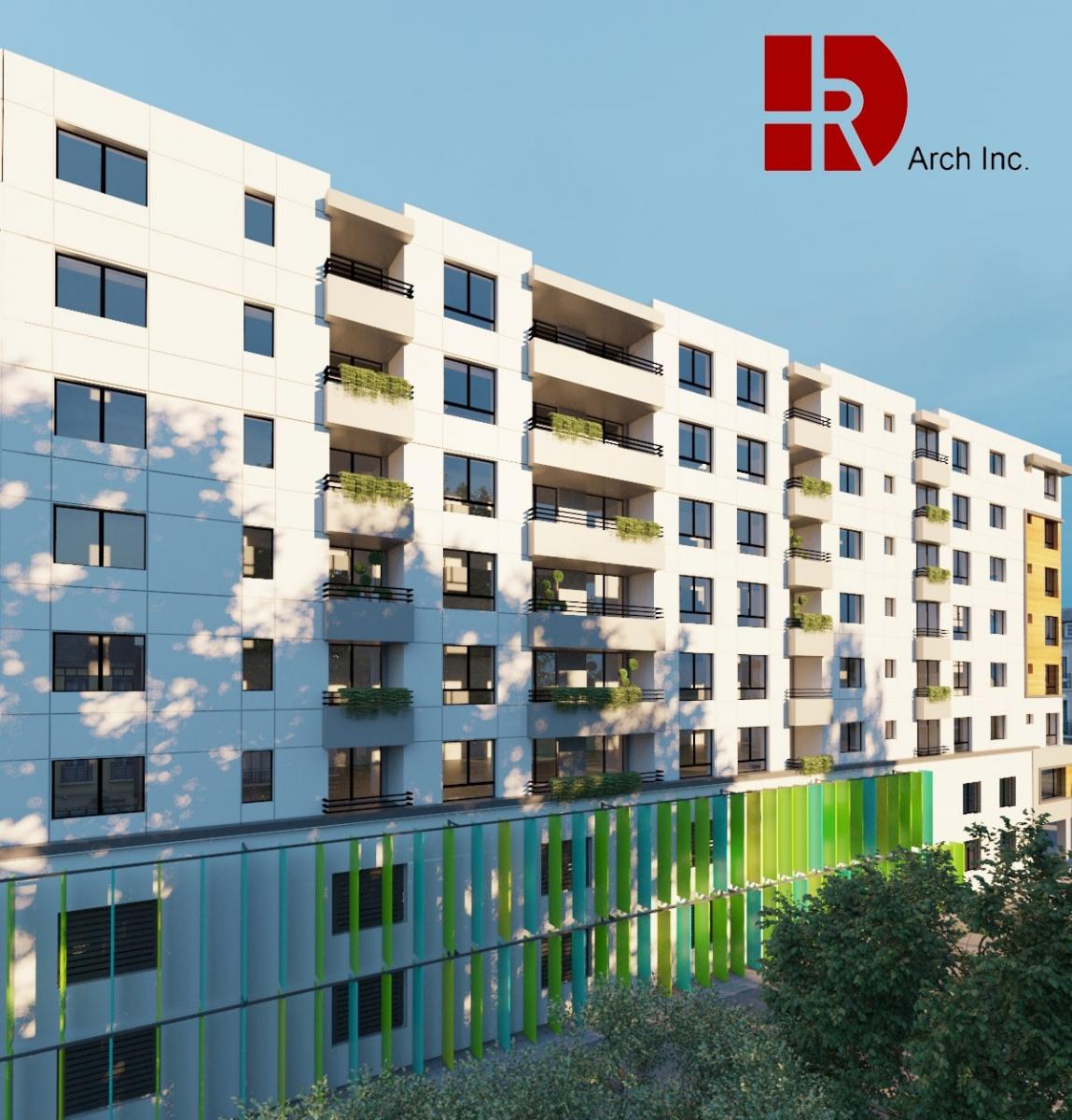Note from Our Neighborhood Voices: A developer who has no experience building anything is using laws passed by Scott Wiener and California YIMBY to shoehorn an 8-story apartment building into a single-family neighborhood. He doesn’t need to pay a single dime to fund traffic improvements, transit, police or schools. And local representatives have no say! Bring back democracy in local planning by joining us using the form below.
By: Liam Dillon
Up in arms over developer Akhilesh Jha’s proposal to replace a single-family home witha seven-story apartment complex, neighbors in the Harvard Heights community turnedto the city for help.
The Los Angeles Planning Commission obliged, ordering Jha to scale down the project.
But Jha, a 49-year-old aerospace engineer turned real estate developer, refused. Instead,when he returned to the planning commission months later, Jha had added an eighthfloor.
“He came back with something that was even worse,” said Brian Jett, who lives threedoors down from the proposed development. “It’s mind-boggling.”
Jha believed he had the law on his side, and after an hour-and-a-half hearing inFebruary, the planning commission agreed. His 33-unit apartment complex wasapproved unanimously, and Jha hopes to break ground within a year.
“I’m offended by it,” said Samantha Millman, the planning commission chair. “But I have no choice but to vote for it.”
Jha is banking his business on moments like these. Jha has spent the last six yearspaging through state laws and city zoning codes. His homework leads him to snap upsingle-family homes where he decides the law will let him build much bigger, no matterwhat anyone else thinks.
Jha is taking advantage of an opportune moment when California politics are turningaway from the slow-growth mantra that has dominated in established cities and suburbsover the last half century. In the face of a crushing housing affordability crisis andshortage of available homes, state lawmakers have approved more than 100 new laws insix years that are designed to incentivize new housing proposals and force localgovernments to approve them.
In Los Angeles, no one is pushing the envelope more than Jha. Besides the 33-unitHarvard Heights project nestled between the 10 Freeway and Koreatown, he has twoproposals in the San Fernando Valley to tear down single-family homes and builddozens of apartments and townhomes on the sites — all efforts that never before wouldhave stood a chance of getting built.
Jha’s plans are kicking up scorn and anger. Millman, the planning commissioner, called the Harvard Heights building a “middle finger to the community,” a reference both to the developer’s attitude toward his neighbors and the visual of an 89-foot-tall structure lording over the one-, two- and three-story buildings nearby. Neighborhood leaders in the Valley worry that Jha’s projects will bring in criminals or ruin the rustic suburban character sustained over decades.
While Jha’s ideas are far out of scale with nearby properties, he’s also not plopping the buildings in the middle of subdivisions. The projects are all within about half a mile of a major freeway with other multifamily housing and businesses nearby.
Jha has already won one court case vindicating his interpretation of city zoning rulesand is prepared to go back for more.
“There will always be conflict,” Jha said. “But the law is very clear: Resolve that conflictin the best interest of producing the housing.”
After immigrating to the United States in the late 1990s, Jha spent two decades designing rockets and planes while working for aerospace firms. He married, had a son and, as he entered middle age, decided he wanted something new and turned to real estate.
At first, Jha wanted to buy a small apartment complex. But when he was outbid for aproperty in San Pedro he thought a better way to make money was to find a house hecould tear down and replace with apartments.
He had absolutely no construction background.
“Never ever built a tent in my life,” he said.
A native Hindi speaker, Jha armed himself with an English dictionary to help with words he didn’t understand while scouring property listings, laws and zoning codes for places to build. He found the crumbling two-story Victorian in Harvard Heights in theWest Adams district for $840,000.
The contentious experience galvanized him. He spent a year fighting an effort to makethe home a historic landmark, which would have blocked its redevelopment. Afterwinning, he planned to build a 20-unit apartment complex under a city program thatprovides incentives for developers near mass transit.
But after months of work, he learned that rules requiring him to have a specifically sizeddriveway and room for an electrical transformer didn’t leave enough area on the lot toprovide sufficiently wide ground-floor commercial space. Jha abandoned hisapplication, but not before he had lost tens of thousands of dollars in permitting feesand design costs, he said.
His plans in a shambles, Jha returned to his research and found a state law known as the “density bonus.”
In the simplest terms, the law allows developers to build more dense housing on a lot inexchange for dedicating some of the units for low-income families. Jha will set asidethree of his 33 apartments for that purpose.
By doing so, Jha gets to bypass all sorts of city zoning and planning rules. The height ofthe building will be double what’s otherwise allowed, its width will cover nearly theentire lot and Jha only has to provide 20 parking spaces on the site. Most important forhim, the law says that as long as Jha testifies these waivers are necessary, the city’shands are tied.
“The city made me go through hearing after hearing after hearing,” Jha said. “Then they would sometimes put a hold on my project because they wanted me to reduce the
height, they wanted me to reduce the density. But I stuck to my project and I stuck tothe law.”
Strengthening the density bonus for developers was one of the key changes approved bystate legislators in recent years to increase both affordable and overall housingproduction, said Ben Metcalf, managing director of UC Berkeley’s Terner Center forHousing Innovation and former director of the state Department of Housing andCommunity Development.
“You can basically choose anything you don’t like in the zoning rules and you get freepasses to throw it out the window,” Metcalf said. “It’s kind of an amazing law.”
Like Jha, builders across the state have sought to redesign projects by adding low-income and veterans housing, while reducing parking and yard space so they can gettheir projects approved even if there’s community outcry, Metcalf said.
“The neighbors have no real leverage anymore,” he said.
Jha’s proposals have left community members apoplectic. In Woodland Hills, Jha wantsto replace a four-bedroom home with an apartment complex of 67 units, seven of which,because of the density bonus and related incentive programs, would be reserved for low-income disabled veterans.
Mihran Kalaydjian, vice president of the Woodland Hills/Warner Center NeighborhoodCouncil, said the development would hurt the area.
“When you’re taking single-family homes and replacing them with big apartmentbuildings, the residents and the tenants of those apartments are coming from differentbackgrounds,” Kalaydjian said. “The different backgrounds could be criminalbackgrounds. It could influence our neighborhoods.”
Kalaydjian, a landlord himself with seven properties around Woodland Hills, said the community has planned areas for commercial buildings and apartments. Departing from that blueprint, he said, could reduce property values and contribute to a general sense of disorder.
In Sylmar, Los Angeles’ northernmost neighborhood at the foot of the San GabrielMountains, community leaders believe Jha’s plan to build 40 townhomes on a one-acre site with a single-family home will destroy the area’s bucolic atmosphere.
The lot’s zoning requires that there’s enough space for horse stables, and townhomeswould prevent horse-owning residents from ever living there, said Peter Postlmayr, amember of the neighborhood council.
Jha “bought a piece of property and it’s zoned for horse keeping,” said Postlmayr, adding that there’s an extensive trail network the zoning designation aims to protect. “He’s trying to change that, which is to the detriment of those living near there.”
Jett and other neighbors in Harvard Heights insist that their opposition isn’t becausethey’re against housing, rather the specifics of Jha’s project. A 64-unit, four-storyapartment complex for low-income senior citizens opened two years ago across thestreet with community support, they said.
Jha’s design includes a two-story above-ground parking garage that’s so wide exhaustvents sit less than ten feet from the small apartments next door. All the negative effectsof the development plus the relatively few low-income units don’t justify itsconstruction, Jett said.
“We’re totally cognizant of the housing crisis and all for affordable housing,” said Jett,an independent film director. “But this isn’t that.”
Metcalf, of UC Berkeley’s Terner Center, said state lawmakers understood nearby residents might dislike newer, larger projects when they were debating the bills. But they wanted to ensure that neighbors’ objections would be less likely to trump housing, especially in areas more primed for growth.

